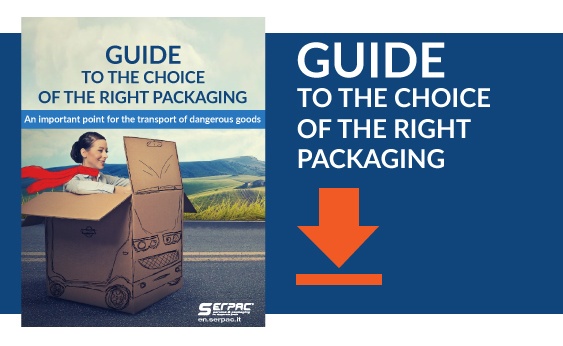5 mistakes not to make when transporting dangerous goods

Whether for shipments by land, rail, inland waterway, sea or air, the transport of dangerous goods, such as compressed gases, flammable liquids, toxic substances, infectious or corrosive substances, one cannot simply improve.
Those who disregard the norms stated in the regulations and/or who do not pay sufficient attention to the transportation of their dangerous products, can put people's health and safety at risk, the environment, and incur severe penalties.
To avoid these eventualities, we have identified the five most serious mistakes that even in good faith, can happen when organizing the transport of dangerous goods.
1) Thinking the regulations as an insurmountable obstacle
The regulations for the transport of dangerous goods are established internationally and nationally. In order to ship your goods in compliance with the provisions in force, the essential premise to begin from is knowing the product thoroughly, as well as the mode of transport.
The regulations concern classification, packaging, marking, labelling and, in general, every aspect that has been considered important. However, such a high degree of detail should not be seen as an obstacle for those managing the logistical aspects of the company. On the contrary, having precise guidelines and requirements, even if sometimes restrictive, benefits those who have the task of shipping the dangerous goods.
2) Not making sure the packaging is certified
Packaging for dangerous goods must have a UN certificate of approval, issued by approved Certification Bodies. To obtain a certificate, meticulous tests are carried out on the production materials and package: dropping, stacking, compression, top lifting, tearing, tipping, vibrating and straightening.
It is important to remember that a certificate must be obtained:
-
for each type packaging (for example, cardboard, wood and steel boxes, plastic and steel drums, jerrycans, bags, metal packagings, etc.);
- for the various modes of transport: land (ADR), rail (RID), inland waterway (ADN), sea (IMDG) and air (ICAO / IATA).
The bureaucratic and technical procedures to obtain a certification can seem intimidating. Fortunately there are qualified specialists who can take care of this, ensuring a fast delivery.
3) Not giving enough importance to internal packaging
The distinction between internal and external packaging is rather intuitive. Internal packaging is often considered (erroneously) of secondary importance, and this can be translated into picking one hastily.
In particular, the identification of internal packaging plays a key role in the transport of dangerous goods. One must:
-
identify it according to the product to be shipped, opting for a degree of sturdiness, able to resist strain and choosing inert materials;
-
select a type that guarantees appropriate containment of the product, avoiding accidental reactions or leakage.
4) Using unsuitable external packaging
External packagings for dangerous goods are of different shapes and materials, such as: wooden crates, cardboard boxes, plastic bags. This qualitative and quantitative abundance derives from the need to equip dangerous goods with their corresponding external packaging, almost made to measure.
The most serious mistake one can make certainly consists of using non-conforming external packaging: in these instances, given that they contain items or substances that can cause harm to people or the environment, the risks associated with the transport are amplified.
Another careless mistake would be to think that different types of external packaging can be exchanged with each other: in this field, one packaging is not the same as another.
5) Inadequate labelling
Labels, danger panels and placards to be affixed to packaging or hazardous material transport units differ according to the class and nature of the risk associated with the product. Their informative function is therefore of the utmost importance. Incomplete or incorrect labelling can generate ambiguity or even misinterpretation of the nature of contents in a package, with potentially disastrous consequences.
On the other hand, state-of-the-art labelling guarantees transparent information, promoting transport safety, from the time of shipment to the destination.
